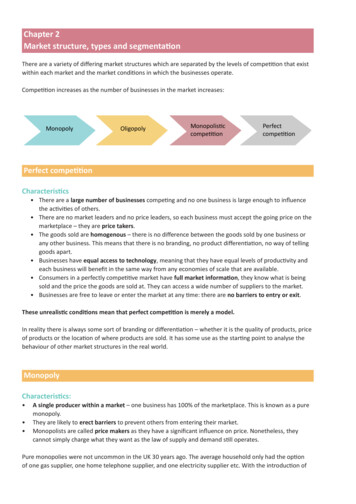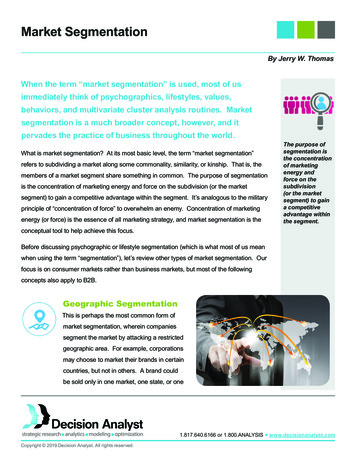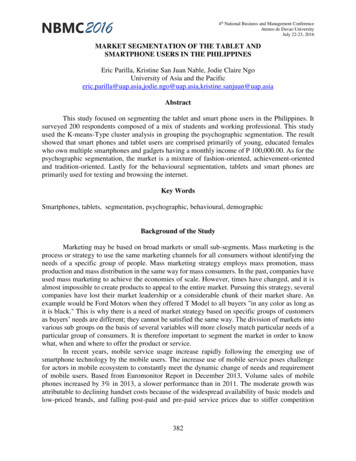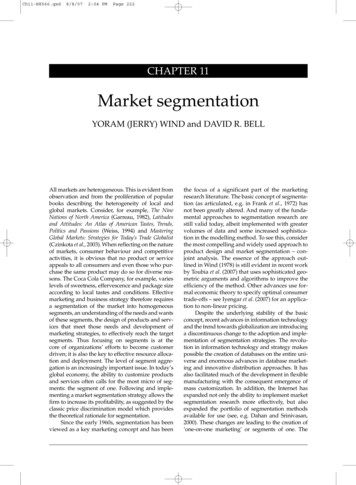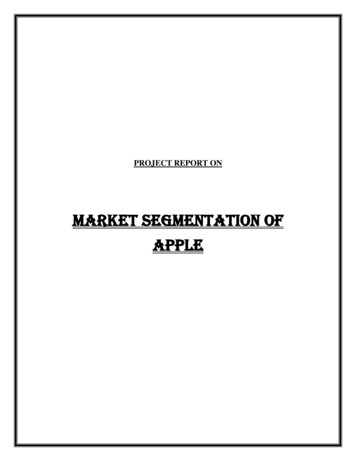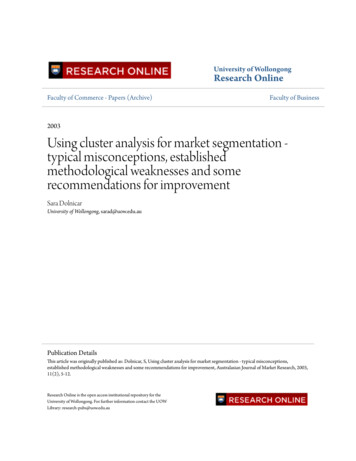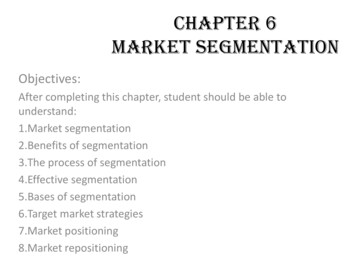
Transcription
CHAPTER 6MARKET SEGMENTATIONObjectives:After completing this chapter, student should be able tounderstand:1.Market segmentation2.Benefits of segmentation3.The process of segmentation4.Effective segmentation5.Bases of segmentation6.Target market strategies7.Market positioning8.Market repositioning
Can be defined as subgroupof people or organization,sharing one or morecharacteristics that causethem to have similar productneeds
Market segmentation is customer-oriented.Marketer will identify the customer need andwant then only decide if it is practical todevelop marketing mix to satisfy those wants. The management can respond to meetchanging market demand. Management can do a better marketing job. Develop strong positions in spealized marketsegment.
1. Identify the current and potential wants thatexist in the market.2. Identify the characteristic that distinguishamong the segments3. Determine who has each want. Final step isto estimate how much demand and potentialsales each segment represents.
Measurable Accessible Substantial Actionable and responsiveness
BASES OF SEGMENTINGCONSUMER MARKET Geographic segmentationDemographic segmentationPsychographics segmentationBenefit segmentationUsage rate segmentation.
TARGET MARKET STRATEGIES Aggregation strategy– A seller treat its total market as a single segment.– Example: gasoline Single –segment strategy– Also known as a concentration strategy. Focus onone segment from within the total market.– Example: Harley Davidson- super heavy weightmarket. Multiple Segment Strategy– Two or more different groups of potentialcustomer are identified as target market.
ADVANTAGE &DISADVANTAGE OFTARGET MARKET STRATEGIES
MARKET POSITIONING A company must decide how to position itselfin relation to the competitors for thatsegment. Positioning could be on the basis of the:– Product’s unique selling proposition– Price– Design characteristic– Method of distribution
MARKET REPOSITIONING Repositioning is changing consumer ‘sperception of a branding relation tocompeting brands. Products and companies repositioned in orderto sustain in slow growth market or to correctpositioning mistake. Example: gun industry.
Market segmentation is customer-oriented. Marketer will identify the customer need and want then only decide if it is practical to develop marketing mix to satisfy those wants. The management can respond to meet changing market demand. Management can do a better marketing job. Develop strong positions in spealized market segment.
